The Sistine Chapel is a famous chapel in the Vatican City, the headquarters of the Roman Catholic Church. It was built in the late 15th century by Pope Sixtus IV, who gave the name. The chapel is known for its magnificent frescoes covering the walls and ceiling. The frescoes depict scenes from the Bible and the history of Christianity and portraits of popes and prophets. The most celebrated frescoes are those painted by Michelangelo, one of the Renaissance’s greatest artists. The architecture of the Sistine Chapel is based on the dimensions of the Temple of Solomon, as described in the Old Testament. The chapel is a rectangular hall with a barrel-vaulted ceiling. It has six windows on each side and a large window at the end of the altar wall. The chapel is divided into three levels: the lower level with the entrance, the middle level with the choir, and the upper level with the papal throne. The interior design of the chapel reflects the theological and artistic vision of its patrons and painters. The Sistine Chapel has a rich history and a profound influence on the culture and religion of the world. It is the place where the cardinals elect the popes in a secret conclave. It is also a museum and a tourist attraction, attracting millions annually. The frescoes of the Sistine Chapel have inspired countless artists, writers, scientists, and philosophers.
What is the Sistine Chapel?
The Sistine Chapel is a religious and ceremonial chapel located in Vatican City, the official residence of the Pope. It was originally known as the Cappella Magna and was built between 1473 and 1481 under the patronage of Pope Sixtus IV. The chapel has been a significant site for the papacy’s religious and administrative activities. Its most famous features are the remarkable frescoes that fill its interior, including the popular ceiling and The Last Judgment, painted by Michelangelo. The Sistine Chapel is also notable as where papal conclaves are held to elect a new Pope. The Sistine Chapel is within the Apostolic Palace in Vatican City, an independent city-state in Rome, Italy. Vatican City is the spiritual and administrative headquarters of the Roman Catholic Church and is recognized as the smallest internationally recognized independent state in the world. The chapel is positioned in the eastern part of the Apostolic Palace. The construction of the Sistine Chapel took place between 1473 and 1481. It was commissioned by Pope Sixtus IV, who wanted to create a grand chapel for papal ceremonies and religious functions. The design of the chapel is attributed to architect Giovanni de Dolci. Over the years, the chapel has undergone various renovations and additions, but its basic structure and layout have remained largely unchanged since its completion. The Sistine Chapel has a length of 134 feet (40.9 meters), a width of 44 feet (13.4 meters), and a maximum height of 68 feet (20.7 meters). These dimensions provide an impressive space for religious ceremonies and artistic displays.
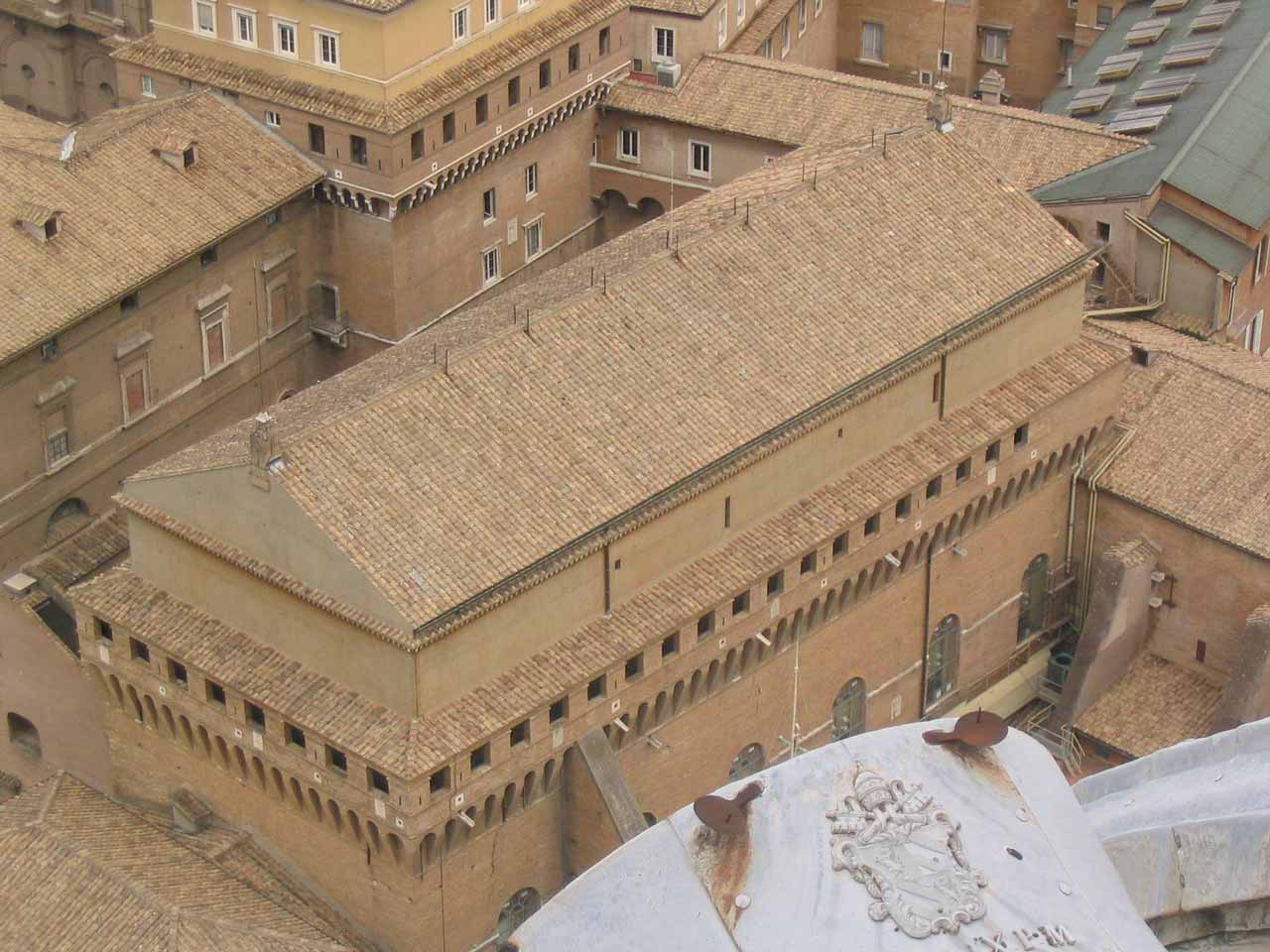
What architectural style is most prominent in the Sistine Chapel?
The Sistine Chapel is predominantly characterized by the architectural style known as High Renaissance. The chapel was designed by various architects, including Baccio Pontelli and Giovanni dei Dolci. It features a rectangular plan with a vaulted ceiling and a centralized floor plan. Balanced proportions, symmetrical designs, and harmonious spatial arrangements characterize the architectural elements. The interior of the Sistine Chapel exemplifies the High Renaissance style through its use of classical architectural elements such as pilasters, arches, and cornices. The chapel’s vaulted ceiling, famously painted by Michelangelo, is filled with intricate frescoes that depict biblical scenes. The architectural design of the chapel creates a sense of grandeur and elegance, emphasizing the religious and cultural significance of the space.
What structural engineering principles are employed in the construction of the Sistine Chapel?
There are 4 major structural engineering principles that are employed in the construction of the Sistine Chapel. Firstly, the chapel’s design relies on arches and vaults to distribute the structure’s weight and provide stability. The main space of the chapel features a barrel vault, a long, curved ceiling that helps to support the structure’s weight and transfer it to the supporting walls. The chapel’s side walls are supported by a series of arches, which further contribute to the structural integrity of the building. Secondly, using buttresses is another important structural element in constructing the Sistine Chapel. Buttresses are external supports that help to counteract the lateral forces exerted on the walls of the building. In the case of the Sistine Chapel, the buttresses are strategically positioned along the exterior walls, providing additional support and stability. Thirdly, the roof of the Sistine Chapel incorporates a system of trusses, which are triangular frameworks that help to distribute the weight of the roof evenly. These trusses are made of timber and are placed horizontally across the width of the chapel, providing support and preventing the roof from sagging or collapsing under its own weight. Lastly, the use of durable materials such as stone and brick contributes to the overall strength and longevity of the Sistine Chapel. These materials have been used for centuries in construction due to their ability to withstand compression and other forces. These materials’ careful selection and arrangement in the chapel’s construction ensure its structural stability and endurance.
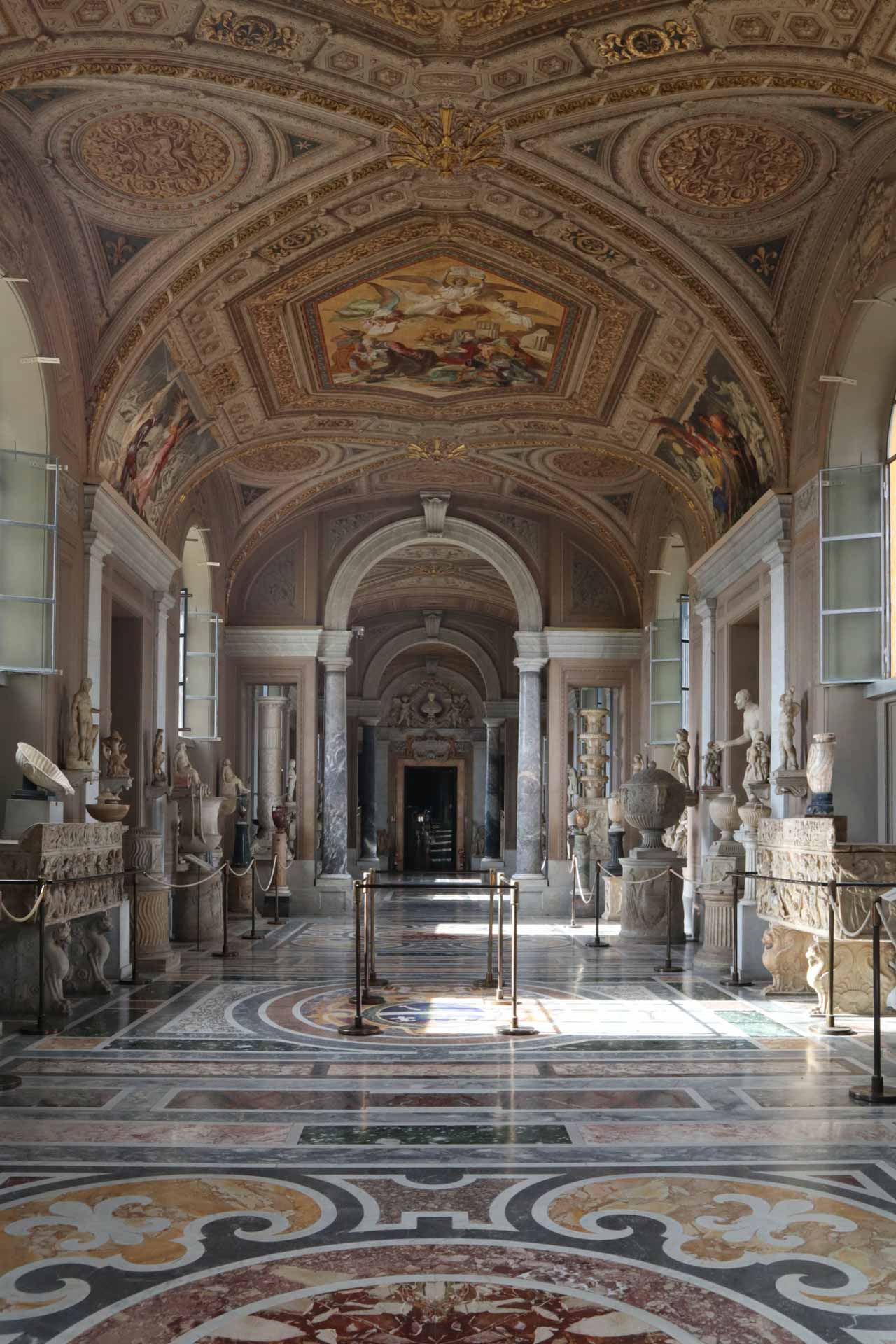
Who designed the Sistine Chapel?
The Sistine Chapel was designed by a famous Italian architect, Giovanni de Dolci. Pope Sixtus IV commissioned Giovanni de Dolci to oversee the chapel’s construction, intended to serve as a place of worship and ceremonial functions for the Pope and the Catholic Church. Giovanni de Dolci was an experienced architect in various architectural projects in Rome. He employed his expertise in designing the Sistine Chapel, carefully considering its functional and aesthetic aspects. Under his guidance, the chapel’s architectural elements, such as arches, vaults, and buttresses, were incorporated to ensure structural stability and longevity. Giovanni de Dolci collaborated with several artists, including Michelangelo, who later painted the popular ceiling frescoes. The combined efforts created the iconic masterpiece showcasing architectural and artistic excellence.
What are the historical design influences visible in the Sistine Chapel?
There are four major historical design influences visible in the Sistine Chapel. Firstly, the chapel reflects the influence of Renaissance architecture, characterized by a return to classical forms and a focus on mathematical proportions. This is evident in the chapel’s symmetrical layout, arches and columns, and the incorporation of classical elements such as pilasters and cornices. Secondly, the Sistine Chapel also influences Gothic architecture, particularly its verticality and the pointed arches filling the windows. The Gothic style, popular in medieval Europe, emphasized height and vertical lines, and these features are reflected in the design of the chapel’s exterior and interior. Thirdly, the chapel’s decorative elements, including its intricate frescoes and ornamental details, showcase the influence of Baroque art and architecture. The Baroque style, popular in the 17th century, was characterized by its dramatic and dynamic compositions, elaborate ornamentation, and a sense of grandeur. These characteristics can be seen in the elaborate frescoes on the chapel’s ceiling and walls, painted by artists such as Michelangelo and Botticelli. Lastly, the Sistine Chapel also incorporates religious and symbolic influences in its design. The chapel was intended to serve as a place of worship and ceremonial functions for the Catholic Church, and its design reflects this purpose. The use of sacred symbols, such as the dove representing the Holy Spirit and the papal tiara symbolizing the authority of the Pope, can be seen in the decorative elements of the chapel.
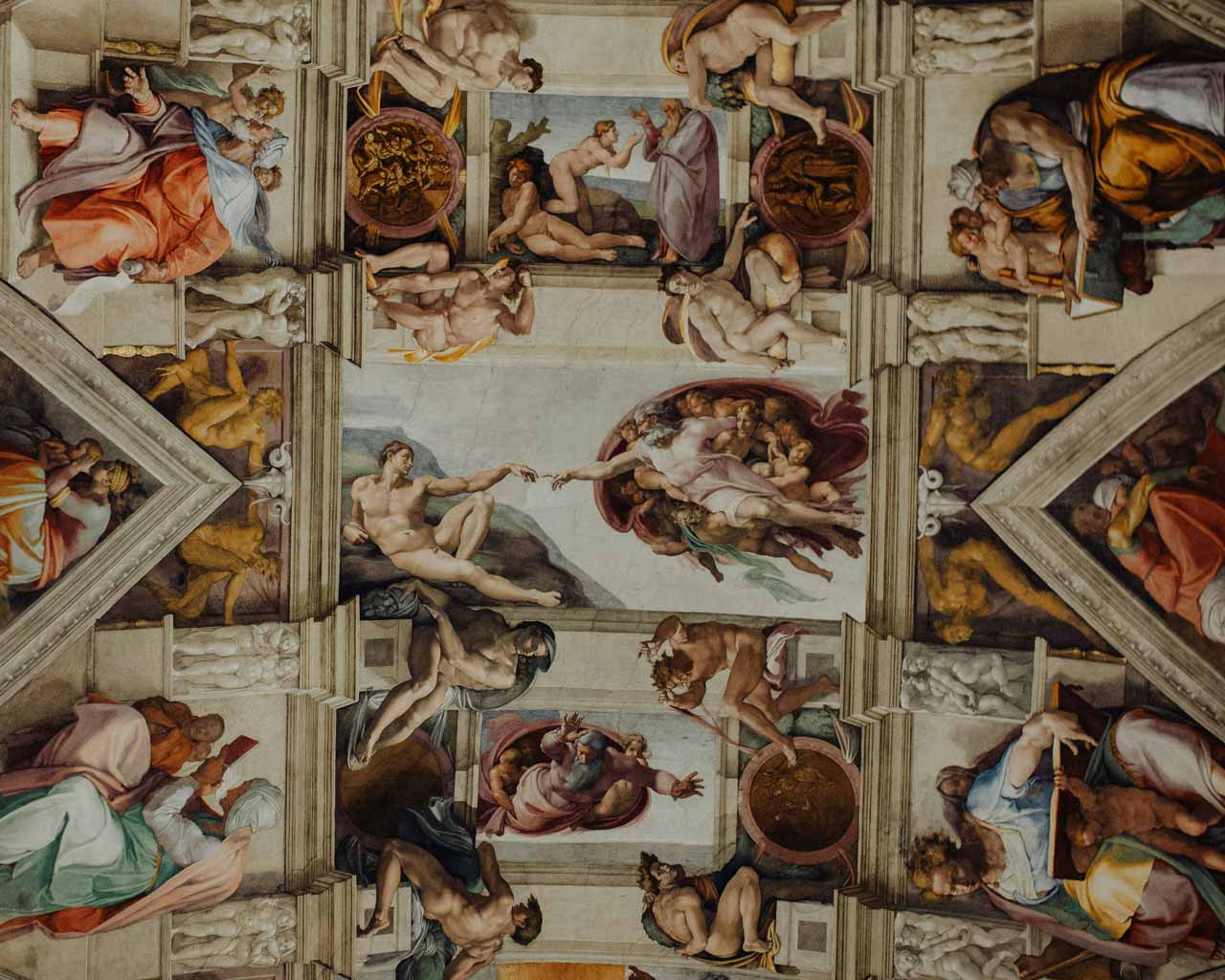
How has the Sistine Chapel influenced the design of other buildings in Vatican City?
The Sistine Chapel influenced the design of other buildings in Vatican City in 4 ways. Firstly, the chapel’s emphasis on grandeur and artistic expression has inspired the design of other religious structures within the Vatican. The Basilica of St. Peter incorporates similar architectural elements, such as high vaulted ceilings, decorative frescoes, and ornate detailing, which echo the grandeur and artistic legacy of the Sistine Chapel. Secondly, other buildings within Vatican City have adopted the Sistine Chapel’s use of architectural elements such as arches, vaults, and pilasters. These elements provide structural integrity and add harmony and elegance to the architectural composition. Buildings like the Apostolic Palace and the Vatican Museums feature similar architectural features that create a cohesive aesthetic within Vatican City. Thirdly, the influence of the Sistine Chapel can be seen in the decorative art and frescoes that adorn the walls and ceilings of other buildings in Vatican City. The intricate and detailed artwork within the Sistine Chapel, particularly the frescoes painted by Michelangelo, has inspired artists and craftsmen throughout history. The influence can be observed in the decorative schemes of other Vatican buildings, where frescoes, mosaics, and intricate paintings enhance visitors’ spiritual and aesthetic experience. Lastly, the Sistine Chapel’s prominent religious and cultural landmark has influenced the design and layout of other public spaces within Vatican City. The design of the Vatican Gardens, which surround the Vatican City, incorporates elements of symmetry, axial planning, and carefully curated landscapes, mirroring the sense of order and harmony within the Sistine Chapel and its surroundings.
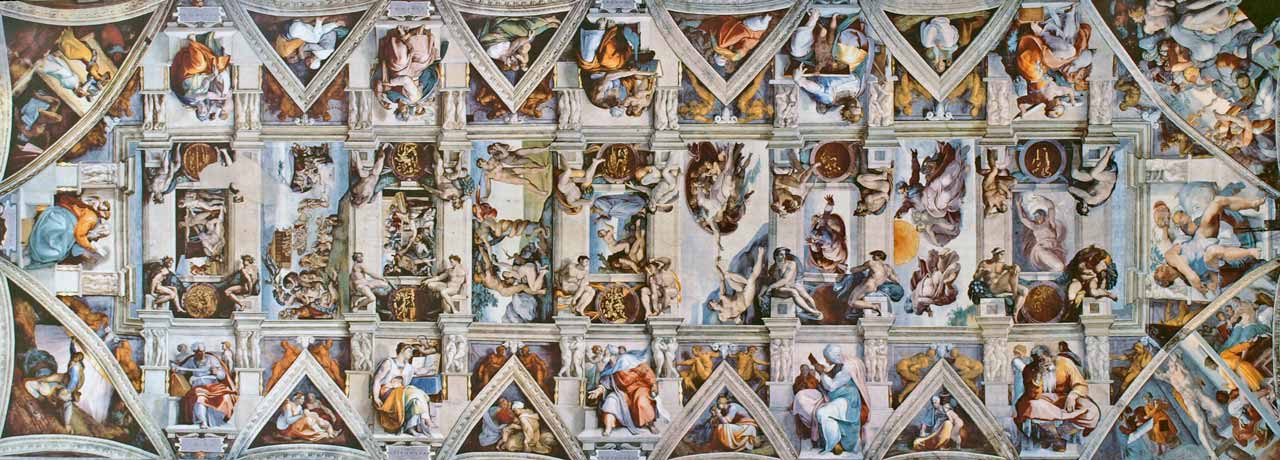
What purpose does the Sistine Chapel serve, and how does the design help?
The Sistine Chapel serves as a place of worship, religious ceremonies, and papal functions for the Catholic Church. Firstly, its spacious interior allows for congregational gatherings and accommodates many worshippers. The high vaulted ceiling creates a sense of awe and reverence, enhancing the spiritual atmosphere within the chapel. Secondly, the design of the Sistine Chapel incorporates symbolic and decorative elements that contribute to its religious significance. The intricate frescoes and artwork on the walls and ceiling depict biblical scenes and figures, visually representing religious narratives and teachings. These artistic elements aid in the spiritual contemplation and devotion of those who visit the chapel. Lastly, the chapel’s acoustics are designed to enhance the auditory experience during religious services. The architecture and materials used in the chapel’s construction contribute to its excellent sound quality, allowing for clear and resonant music and vocal performances. It helps create a solemn and immersive environment for worship and reinforces the chapel’s role as a place of religious significance.
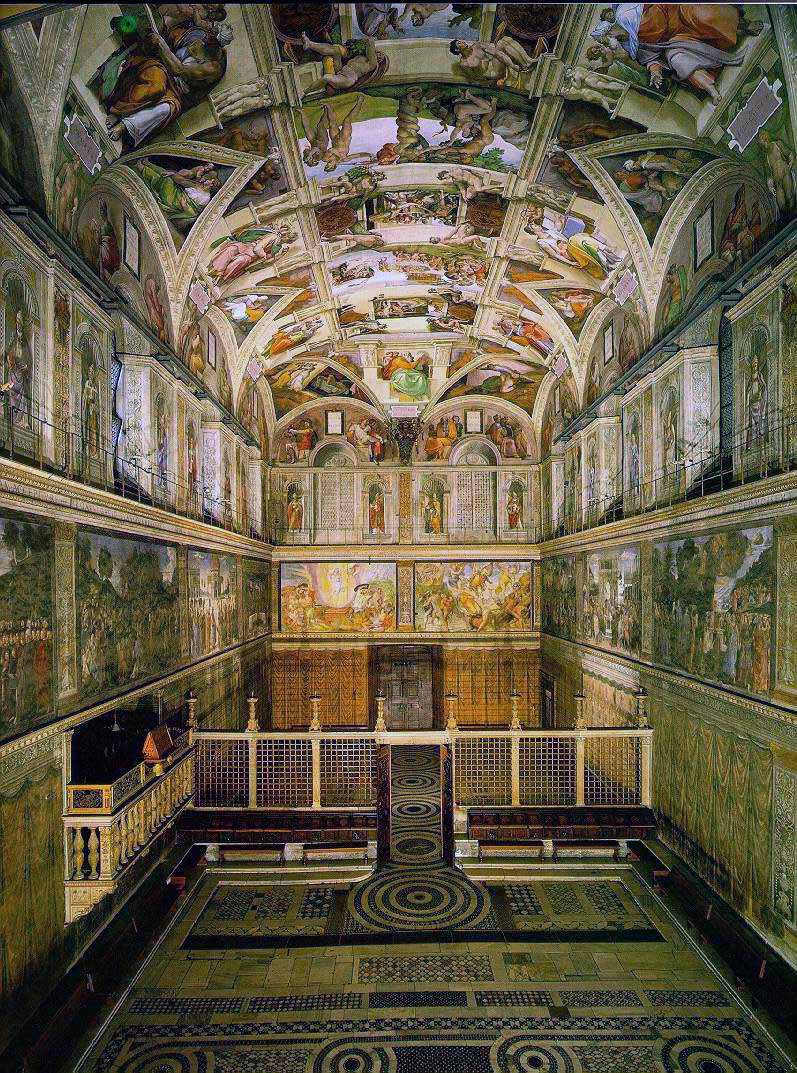
How is the Sistine Chapel maintained?
The Sistine Chapel is meticulously maintained to preserve its historical and artistic significance. Regular cleaning and conservation efforts are undertaken to protect the chapel’s frescoes and artwork from dirt, dust, and environmental pollutants. Skilled conservators use gentle cleaning techniques, such as dry brushing and delicate solvents, to remove surface dirt and grime without causing damage to the delicate paint layers. The chapel’s climate and environmental conditions are carefully controlled to ensure the preservation of its artwork. Climate control systems are in place to regulate temperature and humidity levels, as fluctuations in these factors can cause deterioration and damage to the frescoes. The chapel’s interior is monitored to maintain stable conditions, with temperature typically kept at 20℃ (68℉) to 25℃ (77℉) and humidity between 40% to 60%. Access to the Sistine Chapel is restricted and carefully managed to minimize the risk of damage from overcrowding and physical contact. Visitors must follow specific rules, such as not touching the walls and maintaining a respectful distance from the artwork. Measures are in place to control lighting levels, as excessive exposure to light can fade and degrade the pigments used in the frescoes.
How does the Sistine Chapel reflect cultural and contextual relevance in its design?
The Sistine Chapel reflects cultural and contextual relevance in its design in 4 ways. Firstly, the chapel’s design embodies the cultural and religious values of the Catholic Church. It serves as a significant place of worship and religious ceremonies, reflecting the central role of Catholicism in the cultural and spiritual life of Vatican City and the wider Catholic community. The grandeur and magnificence of the chapel’s architecture and artwork convey a sense of reverence and devotion, aligning with the cultural significance of religious rituals and traditions. Secondly, the Sistine Chapel’s design incorporates artistic elements that reflect the cultural context of the Renaissance period. During the Renaissance, there was a renewed interest in classical art and learning, and the chapel’s design embraced this cultural revival. The use of classical architectural elements, such as arches, pilasters, and vaulted ceilings, showcases the influence of Renaissance architecture and its emphasis on mathematical proportions and harmonious compositions. The intricate frescoes painted by popular artists like Michelangelo and Botticelli further exemplify the Renaissance’s artistic achievements and cultural legacy. Thirdly, the Sistine Chapel’s design is influenced by the historical and political context of Vatican City. As the official residence of the Pope and the spiritual center of the Catholic Church, the chapel’s design reflects the authority and prestige associated with the papacy. The chapel’s architecture and decorative elements convey a sense of power and grandeur, symbolizing the influence and significance of the Vatican within the global religious and political landscape. Lastly, the Sistine Chapel’s design is rooted in its architectural and historical context. The chapel is part of the Vatican Museums complex and is connected to other important buildings, such as the Apostolic Palace and St. Peter’s Basilica. Its location within this cultural and historical enclave reinforces its contextual relevance amidst a rich art, history, and religious heritage collection. The design of the chapel, with its integration of religious symbolism, artistic expression, and historical context, creates a space that resonates with the cultural and contextual significance of Vatican City.
What architectural trend or movement does the Sistine Chapel represent?
The Sistine Chapel represents the architectural movement of Renaissance architecture. Renaissance architecture emerged during the 15th and 16th centuries and was characterized by a revival of classical elements and a focus on proportion, harmony, and mathematical principles. Renaissance architecture seen in the Sistine Chapel is the use of classical elements. The chapel’s architecture embraces the classical vocabulary of ancient Rome, with features such as arches, pilasters, and vaulted ceilings. These elements draw inspiration from the architectural styles of antiquity and reflect the renewed interest in classical art and learning during the Renaissance period. The Sistine Chapel exemplifies the Renaissance emphasis on mathematical proportions and harmonious compositions. Its architectural design follows precise geometric principles, ensuring a balanced and aesthetically pleasing arrangement of spaces and elements. The proportions of the chapel’s interior, such as the height of the vaulted ceiling and the dimensions of the windows and arches, adhere to mathematical ratios, creating a sense of visual harmony and balance.
What are the challenges faced during the restoration of the Sistine Chapel?
There are four major challenges faced during the restoration of the Sistine Chapel. Firstly, the extensive damage and deterioration of the frescoes presented a significant challenge. The frescoes have suffered from dirt accumulation, water infiltration, and the effects of air pollution over the centuries. Cleaning and restoring the delicate paint layers without causing further damage required the expertise of skilled conservators and the development of innovative conservation techniques. Secondly, the sheer scale and complexity of the artwork within the Sistine Chapel presented logistical challenges during the restoration process. The chapel’s walls and ceiling are filled with intricate frescoes that cover a vast area. Accessing and working on these high surfaces required scaffolding and specialized equipment. The conservators had to carefully plan and execute their work, ensuring the stability and safety of the scaffolding while minimizing any potential risks to the artwork. Thirdly, a significant consideration was preserving the artists’ original aesthetic qualities and intentions during the restoration. The restoration aimed to reveal the original colors and details of the frescoes while respecting the artistic vision of masters like Michelangelo. Striking a balance between cleaning and retouching to achieve the best possible outcome while maintaining the historical integrity of the artwork required careful decision-making and expertise. Lastly, the Sistine Chapel’s ongoing use as a site of worship and tourism presented challenges in managing visitor access during the restoration. Balancing the need for conservation with the chapel’s continued function required careful coordination and scheduling. Temporary closures and restricted access were necessary to protect the artwork during the restoration process while minimizing disruption to visitors.
How does the Sistine Chapel comply with contemporary safety and accessibility standards?
The Sistine Chapel complies with contemporary safety and accessibility standards in 4 ways. Firstly, in terms of safety, the chapel has undergone renovations to ensure fire safety. Fire detection and suppression systems have been installed to mitigate the risk of fire and protect the valuable artwork and visitors. Emergency exits and evacuation routes have been strategically designed and marked to facilitate safe and efficient evacuation in emergencies. Secondly, the Sistine Chapel has tried to enhance accessibility for disabled individuals. Ramps and elevators have been installed to provide wheelchair access to different chapel areas, including the entrance and exit. Accessible restrooms and designated seating areas have been incorporated to accommodate the needs of visitors with mobility challenges. Thirdly, the chapel has implemented security measures to ensure the safety of visitors and protect the artwork. Advanced surveillance systems, including security cameras and alarms, are in place to monitor and deter potential threats. Trained security personnel are present to maintain order and provide assistance to visitors. Lastly, the Sistine Chapel has also addressed environmental concerns and sustainability. The implementation of energy-efficient lighting systems helps reduce energy consumption and minimize the environmental impact. Measures to control temperature and humidity levels within the chapel have been implemented to preserve the delicate artwork.
Are there any specific tours for architects or architecture enthusiasts to visit the Sistine Chapel?
Yes, there are specific tours available for architects or architecture enthusiasts to visit the Sistine Chapel. During these tours, knowledgeable guides with expertise in architecture and art history lead visitors through the chapel, pointing out architectural features, explaining the symbolism behind the artwork, and providing historical context. They highlight the architectural elements of the chapel, such as the vaulted ceiling, frescoes, and decorative details, and discuss their significance within the broader context of Renaissance architecture. These specialized tours often include access to restricted areas or exclusive viewing opportunities, allowing architects and architecture enthusiasts to appreciate the details up close and better understand the architectural and artistic mastery on display.
What lessons can architects learn from the design and construction of the Sistine Chapel?
There are four lessons that architects can learn from the design and construction of the Sistine Chapel. Firstly, the chapel’s design highlights the importance of incorporating cultural and contextual elements into architectural projects. Through the reflection of the religious and cultural values of the Catholic Church and embracing the artistic trends of the Renaissance period, the Sistine Chapel stands as a testament to the significance of considering historical, cultural, and social contexts when designing buildings. Secondly, the Sistine Chapel teaches architects the value of attention to detail and craftsmanship. The intricate frescoes and architectural elements demonstrate the meticulous workmanship and artistic skill that went into the chapel’s creation. Architects can learn the importance of precision and dedication to craftsmanship, ensuring that every detail of their designs is carefully executed to achieve the desired aesthetic and functional outcomes. Thirdly, the Sistine Chapel emphasizes the significance of proportion and harmony in architectural composition. The chapel’s design adheres to mathematical principles and balances the proportions of its spaces and elements. Architects can learn from this example by considering the relationship between different architectural components, such as scale, symmetry, and rhythm, to achieve a harmonious and visually pleasing overall design. Lastly, the Sistine Chapel serves as a reminder of the enduring value of preservation and restoration. Despite the passage of time and the challenges of deterioration, the careful restoration of the chapel’s artwork has ensured its longevity and continued appreciation. Architects can learn from the example by recognizing the importance of preserving and maintaining the architectural heritage of their projects, incorporating sustainable and durable materials, and planning for future maintenance and restoration needs.
What are the best architectural landmarks to visit as an architect?
Listed below are the best architectural landmarks to visit as an architect:
- Sagrada Familia: The Sagrada Familia is an iconic basilica located in Barcelona, Spain. Designed by popular architect Antoni Gaudí, it is known for its unique and intricate architectural style that combines Gothic and Art Nouveau influences. The basilica has been under construction since 1882 and is still ongoing, making it a fascinating example of long-term architectural vision and dedication. Visitors can admire the stunning facades, soaring towers, and intricate details that make the Sagrada Familia a must-visit landmark for architects and enthusiasts alike.
- Taj Mahal: The Taj Mahal is a UNESCO World Heritage site in Agra, India. Built in the 17th century by Emperor Shah Jahan as a mausoleum for his beloved wife, it is considered one of the most beautiful examples of Mughal architecture. The Taj Mahal features intricate marble inlay work, symmetrical design elements, and a stunning white marble exterior. Its harmonious proportions and elegant details make it a masterpiece of architectural craftsmanship, attracting millions of visitors annually.
- Sydney Opera House: The Sydney Opera House is an iconic performing arts center in Sydney, Australia. Designed by Danish architect Jørn Utzon, it is known for its distinctive sail-like roof structure. The complex houses multiple performance venues and symbolizes modern expressionist architecture. Its innovative design and engineering challenges make it a significant landmark in architectural history. Visitors can take guided tours to explore the interior spaces and learn about the architectural concepts behind this world-famous structure.
- Guggenheim Museum Bilbao: The Guggenheim Museum Bilbao is a contemporary art museum in Bilbao, Spain. Designed by architect Frank Gehry, it is recognized for its striking, curvilinear form and titanium-clad exterior. The museum’s unconventional design pushes the boundaries of traditional architecture, creating a visually captivating and highly acclaimed landmark. Inside, visitors can experience a diverse collection of modern and contemporary art. The Guggenheim Museum Bilbao has revitalized the city, symbolizing urban regeneration through architecture.
- Fallingwater: Fallingwater is a residential house located in Mill Run, Pennsylvania. Designed by architect Frank Lloyd Wright, it is an iconic example of organic architecture that integrates seamlessly with its natural surroundings. The house is built over a waterfall and features cantilevered balconies and open spaces that blur the boundaries between indoors and outdoors. Fallingwater showcases Wright’s principles of harmony between architecture and nature, making it a significant landmark for architects interested in sustainable design.
- St. Peter’s Basilica: St. Peter’s Basilica is a major basilica in Vatican City, Rome. Designed by known architects, including Michelangelo and Gian Lorenzo Bernini, it is the largest church in the world and a masterpiece of Renaissance and Baroque architecture. The basilica’s grandeur is evident in its vast dome, intricate mosaics, and numerous works of art. Architects can appreciate the meticulous detailing and craftsmanship that went into creating this architectural marvel. Visitors can explore the interior, including the famous St. Peter’s Square, and marvel at its architectural and artistic splendor.
- The Louvre: The Louvre is a world-known art museum in Paris, France. Originally a medieval fortress, it was transformed into a grand palace and later became a museum. The Louvre is celebrated for its iconic glass pyramid entrance, designed by architect I.M. Pei. The museum houses an extensive collection of art and historical artifacts, including famous works such as the Mona Lisa. Architects can appreciate the museum’s architectural evolution, from its historic roots to the modern additions that have transformed it into a cultural landmark.
- Burj Khalifa: The Burj Khalifa is a skyscraper in Dubai, United Arab Emirates. Designed by the architectural firm Skidmore, Owings & Merrill, it is the tallest building in the world, standing at 2,717 feet (828 meters). The Burj Khalifa’s sleek and futuristic design features a stepped silhouette and a reflective glass facade. Its engineering marvels, such as the advanced structural systems and high-speed elevators, make it an impressive landmark for architects interested in tall building design. Visitors can enjoy panoramic views of Dubai from the observation decks on the upper floors.
- The Parthenon: The Parthenon is an ancient temple atop the Acropolis hill in Athens, Greece. Built in the 5th century BCE, it symbolizes classical Greek architecture and is one of the most influential buildings in Western history. The Parthenon showcases the Doric order with its iconic columns and pediments adorned with marble sculptures. Its harmonious proportions and refined architectural details demonstrate the principles of balance and symmetry. Architects can study the Parthenon’s design to understand the foundations of classical architecture and its enduring impact on architectural aesthetics.
- The Great Wall of China: The Great Wall of China is an ancient fortification that stretches across northern China. It is an architectural marvel and a UNESCO World Heritage site built over centuries. The wall showcases various construction techniques, including brick, stone, and rammed earth. Its strategic design incorporates watchtowers, battlements, and defensive features. The Great Wall’s vast scale and historical significance make it a remarkable landmark for architects interested in the intersection of architecture and military engineering. Visitors can explore different sections of the wall and admire the panoramic views of the surrounding landscapes.


